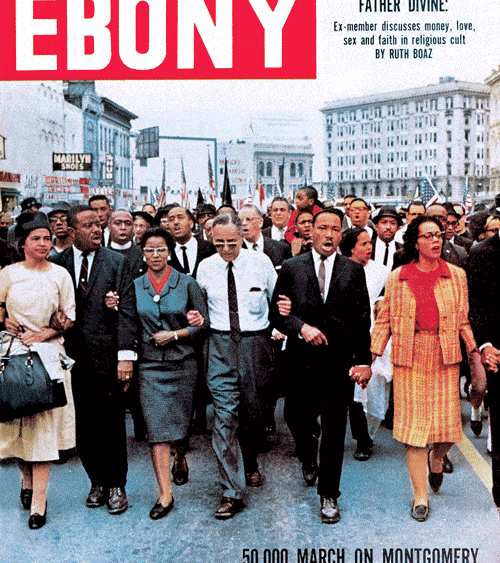[ad_1]
The Blacks of the 1960s
Despite the victory of Brown v. Board of Education in the previous decade, most African-Americans in the ‘60s found themselves still bound by oppressive, segregated and unequal systems in not only schools but also hospitals, housing, the arts, employment and others. Compared with their White counterparts, they were living as second-class citizens and far more likely to live in poverty, suffer unemployment and have shorter life spans.
The November 1962 issue of EBONY featured Dr. Martin Luther King Jr. on its cover and an article penned by EBONY senior editor and historian Lerone Bennett Jr. that compared and contrasted the more efficacious, “radical” and “militant” philosophy of protest of Dr. King with the more peaceful approach of revered educator Booker T. Washington. Dr. King’s photo would not appear on an EBONY cover again until the in memoriam May 1968 issue, which featured the most iconic images from Dr. King’s life.
The August 1969 special issue of EBONY, titled “The Black Revolution,” voiced the disappointment and desperation of Black Americans in the face of a decade whose first half included The March on Washington and whose second half saw the bitter assassination of the biggest hero of the Civil Rights Movement. Hope of conciliation was dead. Dr. King was dead. While much of the nation mourned, some Whites rejoiced. EBONY founder John H. Johnson declared, “Black people have been forced now into the position where they must either fight for their rights or be reduced to a permanent second class citizenship. Black people have chosen to fight and this special issue examines the many facets of that fight. Here black leaders, black philosophers, black activists and black historians discuss The Black Revolution in terms that black people can understand. We feel that this issue is must reading for anyone seeking an insight into Black America in its most crucial period in history.” The issue delivered with inspired, provocative pieces penned by John Conyers, Bayard Ruskin and Huey P. Newton, to name just a few.
In addition to addressing social and political issues in the ’60s, EBONY afforded its readers a bird’s-eye view of how “the other half” lived. It offered proof that the Black middle and upper classes not only existed but in some instances were thriving, providing hope of upward mobility to its readers. The magazine continued to shine a spotlight on Black stars from film, television, stage, politics and sports. EBONY alone boasted covers featuring exclusively Black glitterati. Eartha Kitt, Harry Belafonte, Nat King Cole, Ruby Dee and Ossie Davis, Bill Cosby and Muhammad Ali not only graced the covers of EBONY but also shared their lives and their hearts with readers, particularly as both related to the struggle of Black America.
Figuring greatly in EBONY of the ’60s was a focus on style and fashion. The magazine also featured Ebony Fashion Fair models and couture styles, showcasing the unique flair Black models brought to the world of fashion. Capitalizing on the departure from the Eurocentric beauty standards of the ’40s and ’50, EBONY fashion began to present a more Afrocentric appreciation of natural hair textures and darker skin for both men and women.
Black Americans of the 1960s were fighting to define their future and themselves on their own terms; EBONY was there to capture the journey.
BLACK HISTORY FROM THE PAGES OF EBONY
VIEW THE ENTIRE BLACK HISTORY MONTH SERIES
AFRICAN-AMERICANS IN THE OBAMA ERA
THE AFRICAN-AMERICANS OF THE 1990S
THE BLACK AMERICANS OF THE 1980S
[ad_2]
Source link

